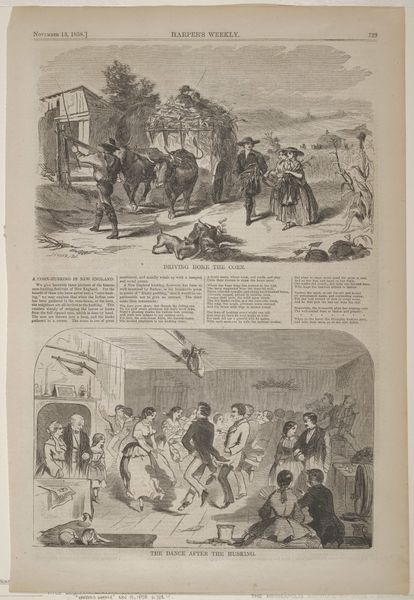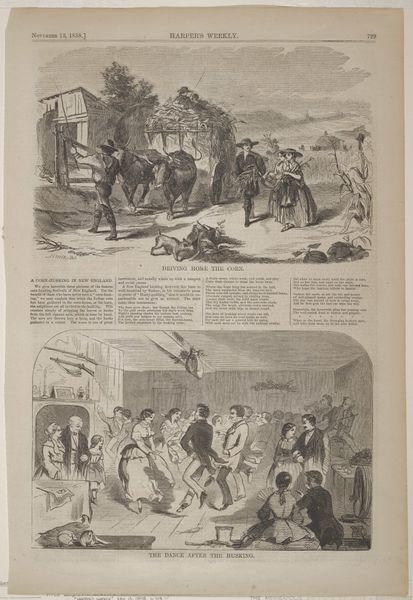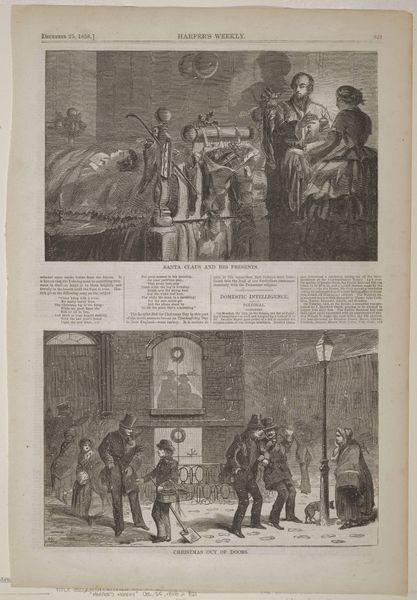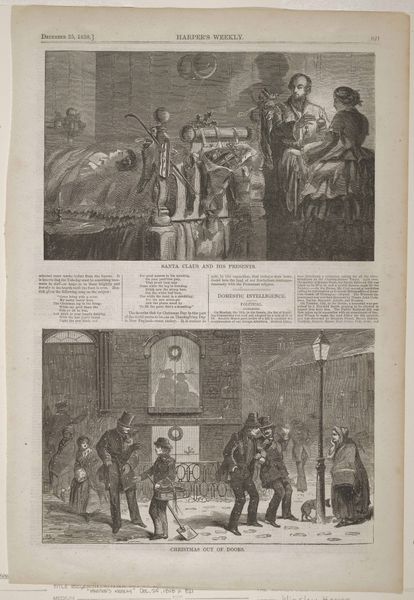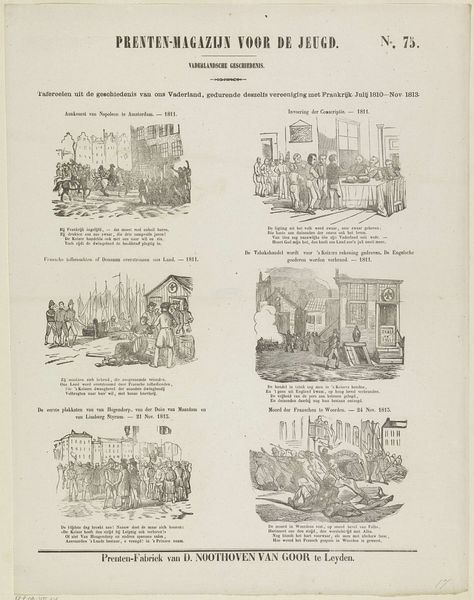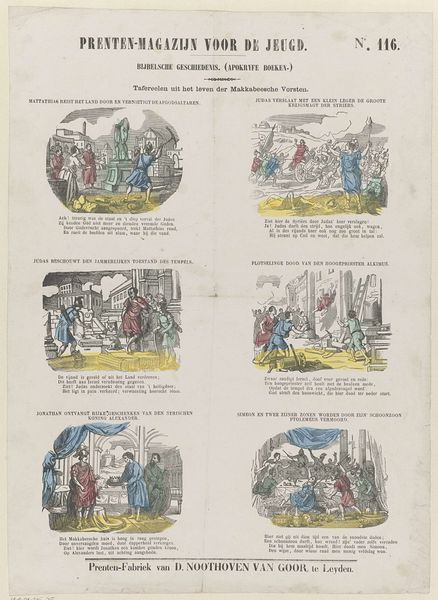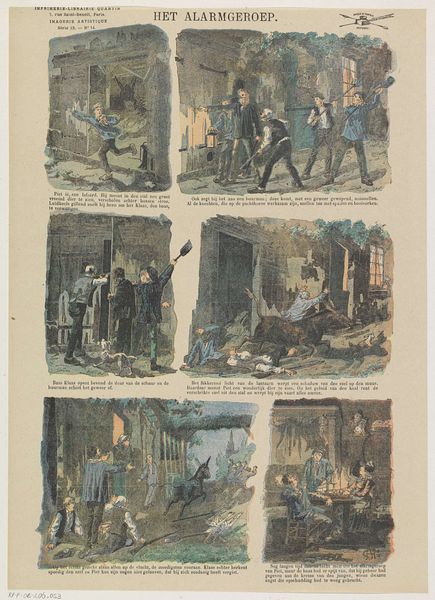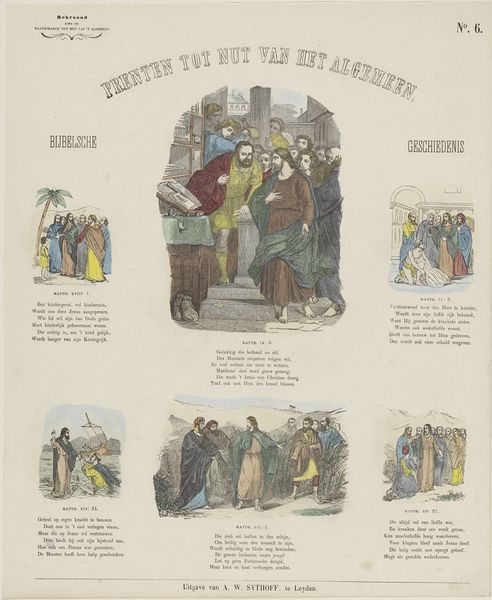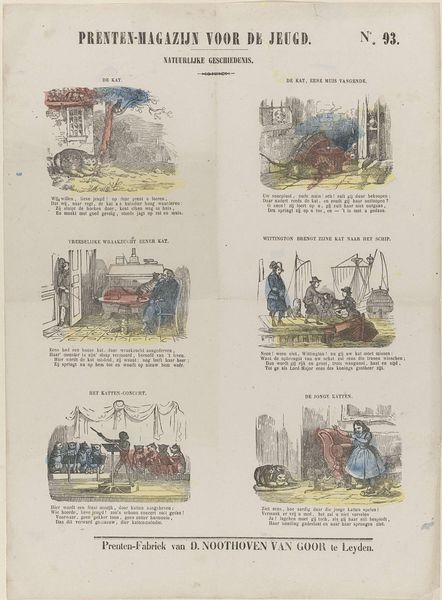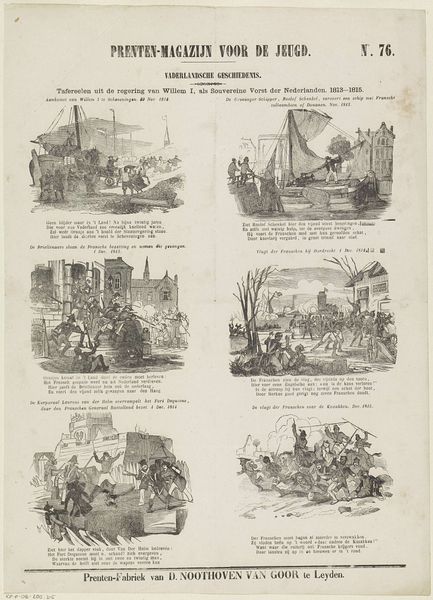
lithograph, print
#
narrative-art
#
lithograph
# print
#
cityscape
#
genre-painting
Dimensions: height 369 mm, width 267 mm
Copyright: Rijks Museum: Open Domain
Editor: This lithograph, titled "The Fearful Soldier," created sometime between 1876 and 1898 by Eugène Chaperon, presents a series of scenes depicting a rather unfortunate military mishap. The scenes create a whimsical effect but, knowing the history of conflicts, I find that juxtaposition somewhat unnerving. What’s your interpretation of Chaperon’s visual story? Curator: What strikes me immediately is how Chaperon uses this seemingly humorous narrative to perhaps critique military institutions. Consider the setting: stark guardhouses and watchful figures suggest the rigid structures of military life. Now, consider the "fearful soldier" motif throughout. This figure appears consistently outwitted, highlighting incompetence, or perhaps disillusionment, within the ranks. Could this print be a subtle commentary on the often-absurd realities of power and order within military contexts? Editor: That’s interesting. So, the humor might be a mask for a more serious point about institutional failings or even a subtle protest against militarism itself? I hadn’t considered that. Curator: Exactly! These genre paintings can offer powerful socio-political statements, cloaked in relatable or humorous scenarios, inviting viewers to consider how institutions function and impact individuals within society. Notice too the narrative structure, how the artist chose to portray specific moments, framing and orchestrating the overall experience. Do you think that framing invites critical reflection, or simple entertainment? Editor: Now that you point it out, the episodic layout does make me think about political cartoons from that era; the print format also supports broader circulation to make political commentary accessible to everyday people. I see it now! Curator: It’s all in observing these nuances. Art is powerful in how it helps people reflect about society's expectations and institutions, past and present. Editor: Absolutely, and thanks to this discussion, I understand the purpose and significance of the lithograph much better now. Curator: As do I, that has also made me think more deeply about it.
Comments
No comments
Be the first to comment and join the conversation on the ultimate creative platform.
